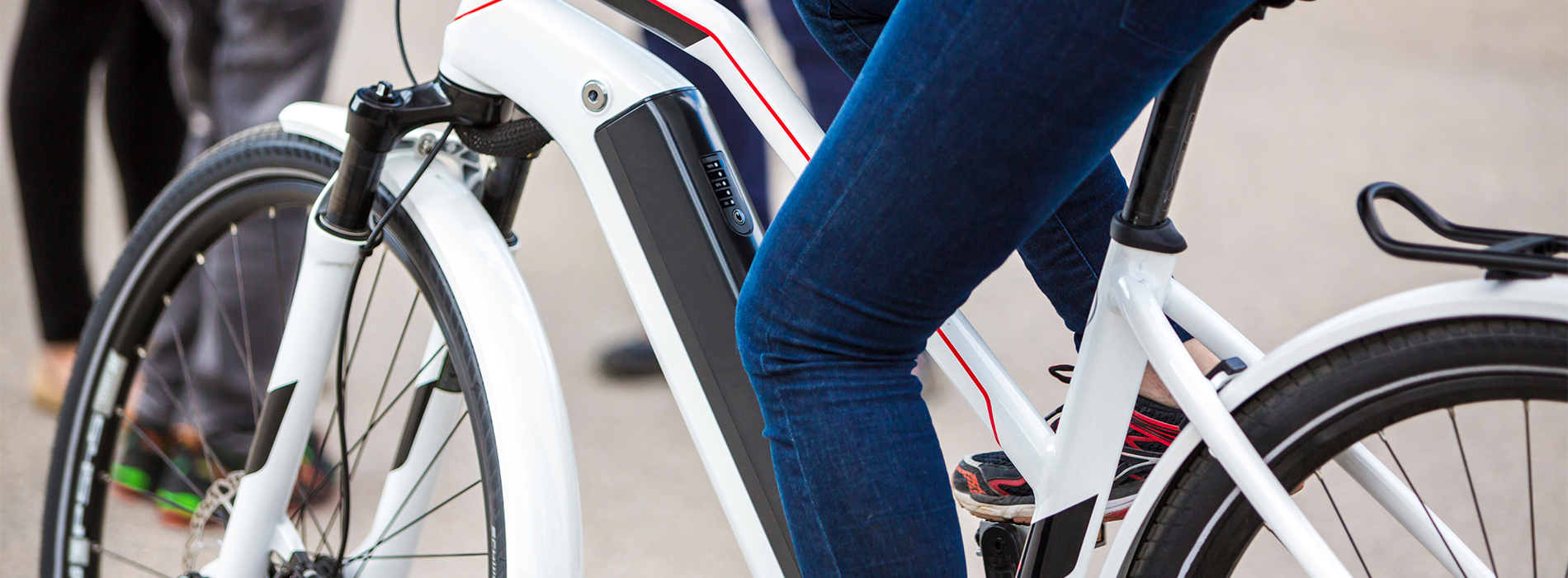How States Can Build Better E-Bike Incentive Programs

English author H.G. Wells once said, “Every time I see an adult on a bicycle, I no longer despair for the future of the human race.” What might he have said about electric bikes?
Electric bicycles (e-bikes) are growing in popularity – U.S. sales of e-bikes in 2021 doubled from the year before and even outpaced sales of electric vehicles (EVs).
E-bikes can help people get to work, increase earnings and decrease costs for delivery service drivers, relieve traffic congestion and reduce greenhouse gas emissions. Because of these transportation, economic and environmental benefits, some states, cities and utilities are considering or have already launched e-bike incentive programs to encourage more adoption.
There has been a stampede of interest in e-bikes, with rebate applicants hitting program funding limits within weeks (Vermont) or even minutes (Denver).
The rapid adoption of any new technology usually leads to policy questions:
- What safety issues might these new e-bike riders face?
- Can we be sure e-bikes are replacing gasoline-powered vehicles, and thus truly benefiting the environment?
A well-crafted incentive program can be part of the public policy landscape to address emerging issues as interest in e-bikes surges.
Include safety training as part of incentives
As more e-bikes hit the roads, communities are grappling with the consequences of untrained or helmet-free riders getting into crashes. Across the country, injuries from e-scooters, e-bikes and hoverboards increased 70% from 2017 to 2020.
E-Bikes fall into three categories with operating speeds that can approach or surpass the speed limit for a residential street:
- Class 1: Top speed of 20 mph – electric motor works when pedaling.
- Class 2: Top speed of 20 mph – motor works when not pedaling with throttle control.
- Class 3: Top speed of 28 mph – may or may not have a throttle (depending on the state).
To address safety concerns, incentive program designers can build in safety requirements. For example, e-bike dealers could be required to provide a safety briefing, on-bike training or other information before they can offer a rebate. Programs could also be broadened to include the purchase of safety equipment with incentive funds for helmets, gloves and add-on reflectors or lights.
Only incentivize certified e-bikes
As more people have bought e-bikes, there have been more reports of problems with the technology, including dangerous and deadly fires. In New York City, officials are considering banning e-bikes from public housing due to fire safety concerns, and the Fire Department of New York is sharing safety tips about lithium batteries.
To promote greater safety, e-bike incentive programs should be restricted to those that have undergone extensive safety testing required to comply with the standards for certification by Underwriters Laboratories (UL).
Require data collection
There’s a big “if” about e-bikes helping solve a variety of transportation and environmental problems. They are a solution if they’re replacing gasoline-powered cars rather than replacing mass transit or walking.
Because e-bike adoption is so new, there is little research to indicate how they are being used, when and where, and what transportation modes they are replacing. E-bike incentive programs can play a key role in filling this knowledge gap by requesting or requiring consumers who receive incentives to participate in research efforts via surveys or other outreach. Vermont, for example, included a clause in the state’s eBike Incentives Program terms and conditions saying the state may request participation from incentive recipients in ongoing research efforts.
Leverage incentives for safety and data
The Center for Sustainable Energy, which has long administered EV incentive programs, has gained experience with successful e-bike programs, such as the statewide Vermont program and Sonoma Clean Power program in California.
E-bike incentives are pivotal to increasing and encouraging ridership among people from all types of communities. In Vermont, and soon in California and other states, policymakers are seeing how e-bikes can help the environment and empower residents economically with low-cost transportation.
This is an exciting time in the transition from gas-powered to electric transportation. By offering e-bike incentive programs that include safety training, incentivize only UL-certified e-bikes and collect data on their use, states can help guide the adoption of this technology.

